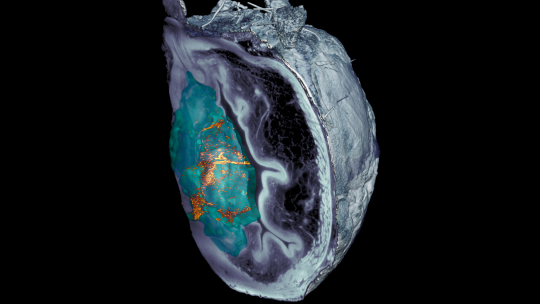Researchers have introduced a novel approach to treat bladder cancer by deploying nanobots powered by an unconventional source: urine.
These self-propelled nanorobots, developed by scientists from the Institute for Bioengineering of Catalonia (IBEC), CIC biomaGUNE, Institute for Research in Biomedicine Barcelona (IRB Barcelona), and the Autonomous University of Barcelona (UAB), have demonstrated significant success in reducing bladder tumors in mice by almost 90%.

Nanorobots for Bladder Cancer
The nanorobots present a promising avenue for addressing bladder cancer, one of the most prevalent types of cancer globally and the fourth most common tumor in men. The research team's work leverages cutting-edge nanotechnology and bioimaging techniques, providing a glimpse into the future of cancer treatment.
The global prevalence of bladder cancer presents a significant healthcare obstacle. While mortality rates are relatively low, the recurrence of nearly half of bladder tumors within five years requires continual monitoring, frequent hospital visits, and repeated treatments.
Existing therapies, which involve administering drugs directly into the bladder, demonstrate favorable survival rates but offer limited therapeutic effectiveness, according to the research team.
The newly explored alternative involves using nanoparticles, specifically nanorobots, capable of delivering therapeutic agents directly to the tumor. Nanorobots, distinguished by their ability to self-propel inside the body, present a cutting-edge solution to enhance the precision and efficiency of cancer treatment.
Powered by Urea
The nanorobots developed by the research team are powered by urea, a waste substance found in urine, and are designed to target tumors specifically.
These nanomachines utilize a porous silica sphere with various components on their surface, including the enzyme urease, which reacts with urea, propelling the nanoparticle. Additionally, the nanorobots carry radioactive iodine, a radioisotope primarily employed for localized tumor treatment.
The nanorobots effectively reduced tumor volume by 90% after a single dose. The team noted that this efficiency level surpasses current treatments, highlighting the potential for a more streamlined and cost-effective therapeutic approach.
Samuel Sánchez, the study's leader and ICREA research professor at IBEC, emphasized the significance of the results, saying that the nanorobot treatment could significantly increase efficiency by reducing the number of hospital appointments and overall treatment costs.
"With a single dose, we observed a 90% decrease in tumour volume. This is significantly more efficient than current treatments, given that patients with this type of tumour typically have between 6 and 14 hospital appointments," Sánchez said in a statement.
"This therapeutic approach would increase efficiency by reducing the length of hospitalisations and the cost of the treatment," he added.
The Next Step
The research team is focused on determining whether tumors treated with nanorobots recur. This critical next step will contribute valuable insights into this cancer treatment's long-term efficacy and potential applications.
The scientific challenge of working with nanorobots has been met with innovative bioimaging techniques developed by the Advanced Digital Microscopy Facility at IRB Barcelona.
As it overcomes the limits of traditional clinical imaging techniques, the facility's approach enables the visualization and localization of nanorobots within tissues and tumors without prior molecular tagging. The team's findings were published in Nature Nanotechnology.
Related Article : This Electronic Bra Can Potentially Detect Breast Cancer Early

ⓒ 2025 TECHTIMES.com All rights reserved. Do not reproduce without permission.




